Embarking on a hike can be an invigorating journey, yet it’s not without its potential pitfalls. I understand; one moment you’re immersing yourself in the breathtaking beauty of nature, and suddenly you find yourself disoriented or grappling with unforeseen weather shifts.
But fret not! This blog post is your faithful guide, brimming with 14 practical safety tips that will help transform unexpected hurdles into just minor hiccups on your path. So let’s get started—because sometimes arming yourself with the right know-how can spell the difference between a delightful hiking adventure and a nerve-wracking ordeal.
Key Takeaways
- Consult with a park ranger to get information about safe hiking trails and potential hazards in the area.
- Always hike with at least one friend for safety and support during emergencies.
- Share your hiking itinerary with someone outside of your group, including details like the path you’ll take and when you expect to return.
- Prepare for the weather by checking forecasts and packing appropriate clothing and gear.
General Hiking Safety Tips
– Consult a park ranger for updated trail conditions and any potential hazards.
– Hike with at least one friend to have someone there in case of emergencies.
– Share your itinerary with someone outside of the group so they know your plans and can alert authorities if needed.
– Agree on an emergency plan with your hiking buddy, including what to do in case of injuries or getting lost.
– Prepare for the weather by checking forecasts and packing appropriate clothing and gear.
Consult a park ranger
I always consult a park ranger when I plan a hike. Park rangers know all about the local area. They can show me safe hiking trails. They also tell me about what animals live nearby.
The park ranger helps me avoid dangerous spots on my hike. Talking to a ranger is a good way to keep safe on hikes.
Hike with at least one friend
Always hike with a friend. This is one of the top safety tips that U.S. National Park Service shares. If something happens, your pal can help you out. There’s someone to call for help or give first aid if you get hurt.
A second person also makes the trip more fun! You share laughs, talk and take photos together. California State Parks says hiking in groups keeps us safe and adds joy to our trips.
Share your itinerary with someone outside of the group
Before you hit the trail, tell a friend about your plan. Make sure it’s someone not in your hiking group. This way, there is another person who knows where you are going and when to expect your return.
The details of your hike are important too. Tell them about the path you will take, where you start off, and how long you think the hike will last. This step adds extra safety to your hike.
If something goes wrong and help is needed, this information can guide rescue teams to find you faster.
Agree on an emergency plan
Establishing an emergency plan is crucial for hiking safety. When we head out on a hike, we need to be prepared for unexpected situations. That’s why it’s important to agree on an emergency plan with our hiking companions beforehand.
We should discuss what to do in case of injuries, getting lost, or encountering dangerous wildlife. By having a plan in place, we can quickly respond and take the necessary actions to keep ourselves and others safe.
Planning ahead also includes knowing the location of emergency services or park rangers who can help us if needed. So, let’s prioritize safety by agreeing on an emergency plan before hitting the trails!
Prepare for the weather
One of the most important things to remember when going hiking is to prepare for the weather. It’s crucial to check the forecast before heading out on your adventure. By knowing what kind of weather to expect, you can dress appropriately and bring any necessary gear, like rain jackets or sunscreen.
Being prepared for changing conditions will help keep you safe and comfortable during your hike. So, always make sure to check the weather beforehand and plan accordingly!
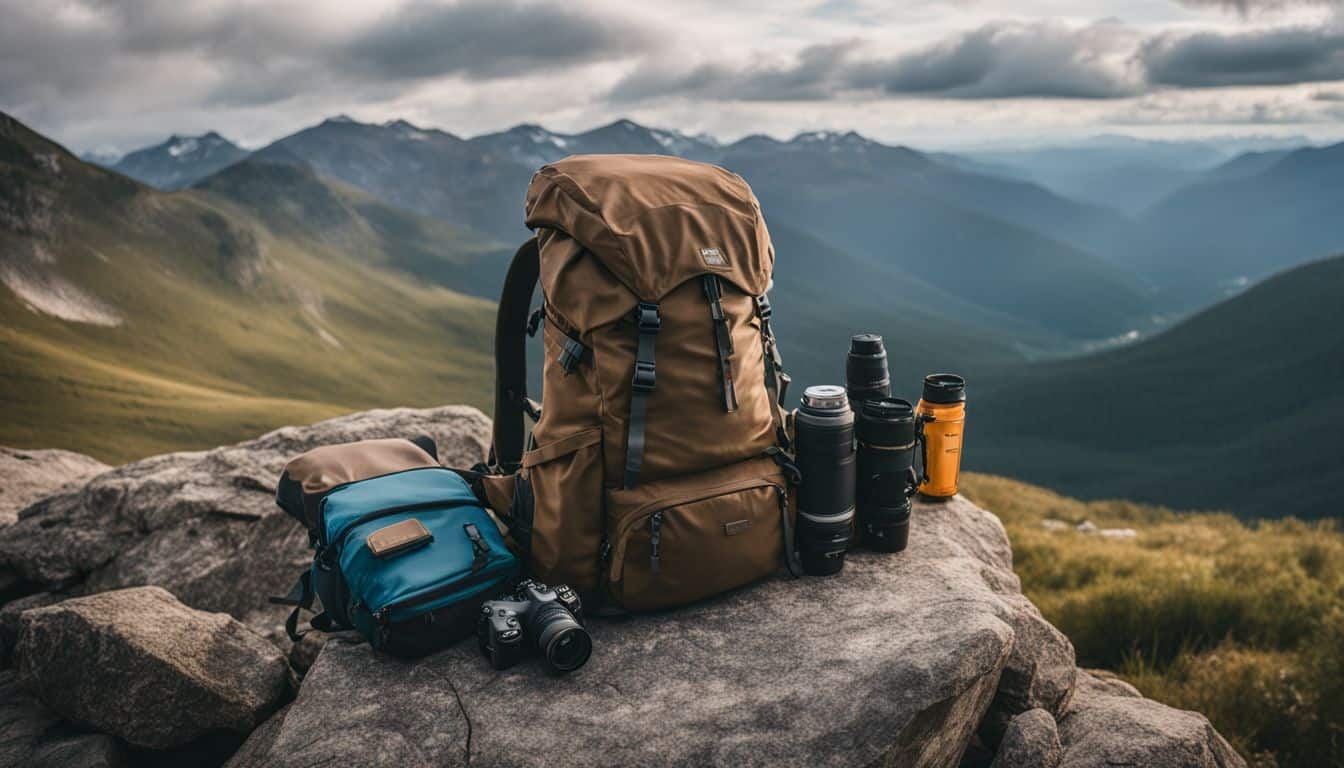
Pack the essentials (10 Essentials)
When going hiking, it’s important to pack the essentials. These are the must-haves that will ensure your safety and comfort on the trail. Here are the 10 essential items you should bring with you:
- Appropriate footwear: Wear sturdy hiking boots or shoes that provide good traction and support for your feet.
- Navigational equipment: Carry a map, compass, and GPS device or smartphone with offline maps to help you stay on track.
- Extra clothing and rain gear: Weather conditions can change quickly in the mountains, so pack extra layers of clothing and a waterproof jacket or poncho.
- First aid kit: Have a small first aid kit containing band-aids, antiseptic wipes, gauze pads, and any necessary medications.
- Headlamp or flashlight: It’s important to have a reliable light source for navigating in low-light conditions or emergencies.
- Sun protection: Bring sunscreen, sunglasses, and a hat to protect yourself from harmful UV rays.
- Firestarter: Carry matches or a lighter to start a fire for warmth or signaling for help if needed.
- Emergency shelter: Pack a lightweight emergency blanket or bivy sack in case you need to spend an unexpected night outdoors.
- Food and water: Take plenty of snacks and at least two liters of water per person to stay hydrated and energized during your hike.
- Multi-tool: A multi-tool with a knife, pliers, screwdriver, and other useful tools can come in handy for various situations.
Additional Safety Tips
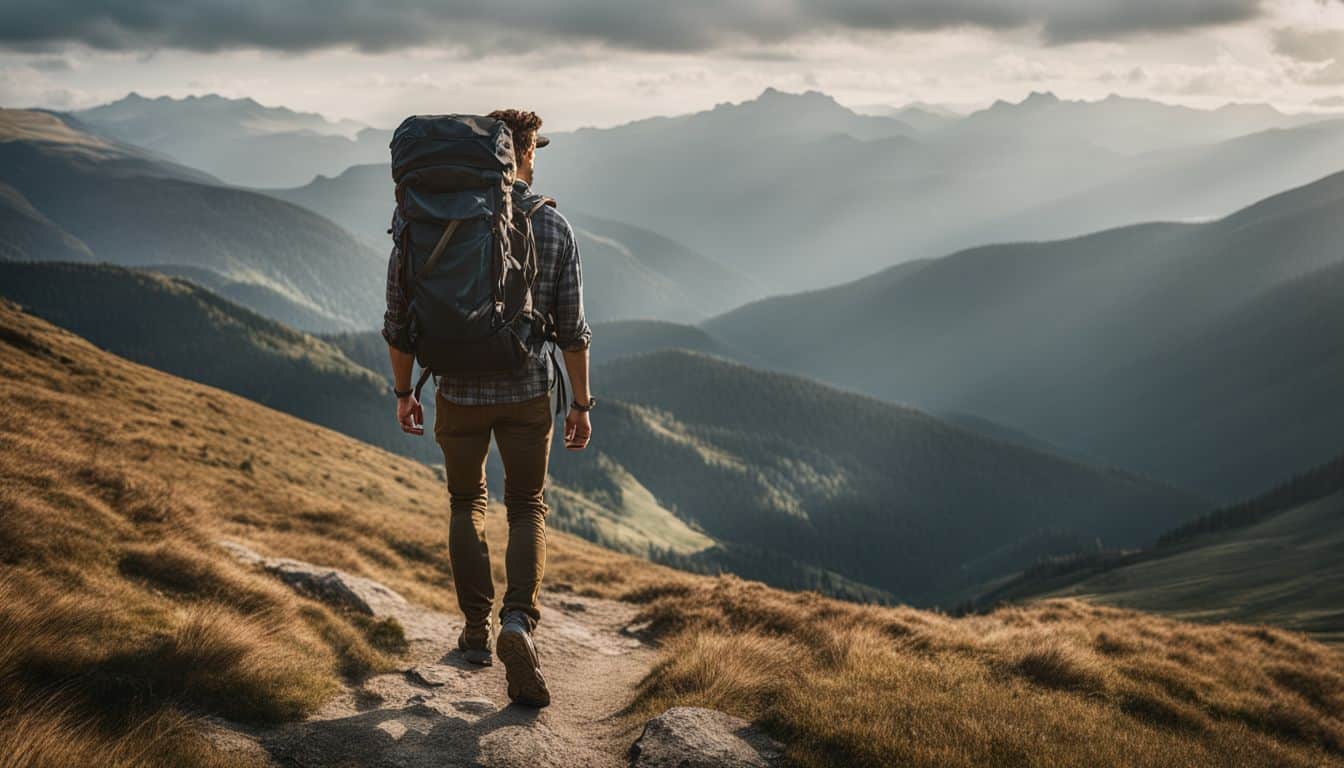
In addition to the general hiking safety tips, there are a few more precautions you should take to ensure a successful and safe hike.
Plan for an overnight stay, even on day hikes
It’s always a good idea to plan for an overnight stay, even if you’re just going on a day hike. You never know what might happen and it’s better to be prepared. This way, if something unexpected comes up, like bad weather or getting lost, you’ll have the necessary equipment and supplies to spend the night outdoors safely.
It’s all about being proactive and ensuring your safety while enjoying the great outdoors. So make sure to pack a tent or tarp, sleeping bag, extra clothes, food, water, and other essentials that will help you stay comfortable if you need to spend the night outside.
Being prepared for any situation is key when it comes to hiking safety!
Let someone know where you’re going
Before embarking on a hike, it’s important to let someone know where you’re going. This is a crucial safety precaution in case anything unexpected happens along the way. By sharing your hiking plans with a trusted person outside of your group, you ensure that there is someone who knows where to find you if assistance is needed.
Create an itinerary that includes details about your route, expected return time, and any specific landmarks or trailheads you’ll be visiting. Providing this information helps others locate and aid you in case of an emergency.
Keep in mind that communication is key when it comes to outdoor safety!
Research your route in advance
Before heading out on a hike, it’s important to research your route in advance. This helps you stay safe and ensures an enjoyable hiking experience. By looking at maps or brochures, you can gather valuable information about the length of the hike, how difficult it is, the elevation changes, and the terrain conditions.
Knowing these details will help you assess if the trail matches your physical fitness level and abilities. Additionally, researching in advance allows you to plan where to park and locate restroom facilities along the way.
Remember that staying on track and not walking off-trail reduces the risk of getting lost or injured while hiking. So take some time to research your route beforehand for a successful adventure!
Bring snacks and extra water
When going hiking, it’s important to bring snacks and extra water. This will help keep you hydrated and energized throughout your hike. It’s crucial to stay hydrated to prevent dehydration, especially when hiking at high elevations or in hot weather.
Bring reusable water bottles or a purification system if there are no reliable water sources along the trail. Additionally, packing lots of snacks, like trail mix or portable food options, will provide you with necessary nutrients and energy while on the hike.
Remember to store your food in watertight containers to protect them from melting ice water. So always make sure to pack enough snacks and extra water for a successful and enjoyable hike!
Avoid interacting with wildlife
When you’re out hiking, it’s important to avoid interacting with wildlife. This is because it can be risky for both humans and the animals themselves. Remember that animals have instincts and may react unpredictably if they feel threatened or provoked.
To stay safe, give them plenty of space and never approach or touch them. Additionally, properly storing your food and scented items can help minimize the attraction of wildlife to your campsite, reducing the chances of encountering them up close.
By respecting wildlife from a distance, you can enjoy a safer hiking experience for everyone involved.
Comprehensive Guide on Hiking Safety Precautions
As a hiking enthusiast, I understand the importance of staying safe on the trails. That’s why I want to provide you with a comprehensive guide on hiking safety precautions. These tips will help ensure that your hiking adventures are enjoyable and accident-free.
Firstly, it’s crucial to consult a park ranger before starting your hike. They can provide valuable information about trail conditions, weather forecasts, and any potential hazards to watch out for.
This way, you’ll be well-prepared for what lies ahead.
Secondly, always hike with at least one friend or companion. Having someone by your side increases safety and provides an extra set of eyes and ears in case of emergencies or unforeseen circumstances.
Next, make sure to share your itinerary with someone outside of your hiking group. Let them know where you’re going and when you expect to return. This way, if something goes wrong or if you don’t come back within the expected time frame, they can alert authorities and initiate a search if necessary.
Another important precaution is agreeing on an emergency plan with your hiking companions. Determine what steps should be taken in case someone gets injured or lost during the hike.
Knowing how to communicate clearly and efficiently in such situations is vital for everyone’s safety.
Additionally, prepare for the weather before heading out on a hike. Check the forecast and dress accordingly – layering clothes is usually recommended as it allows you to adjust based on temperature changes throughout the day.
Lastly, pack all the essentials known as “10 Essentials” – items like navigation tools (map & compass), sun protection (hat & sunscreen), extra clothing layers (rain jacket & warm hat), headlamp/flashlight & extra batteries), first aid supplies, knife/multitool/repair kit/tape-duct tape/safety pins/candles/lighter/matches/water container-to hold 2 liters drinking water/fake sugar packets-for energy).
By following these comprehensive guidelines for hiking safety precautions, you’ll be well-prepared and equipped to handle any challenges that may arise during your outdoor adventures.
Stay safe and have a fantastic time exploring the great outdoors!
Staying Safe on the Trail
Start your hike early to avoid hiking in the dark or during extreme weather conditions, know what to do in case of bad weather, stay dry by wearing appropriate clothing and gear, carry a whistle for emergencies, and avoid wearing headphones while hiking.
Keep reading to learn more about these essential safety tips!
Start your hike early
Commencing your hike at the crack of dawn is one of the top tips for hiking safety. By setting off on your hike in the morning, you can enhance your safety on the trail. Starting early allows you to avoid dangerous conditions like thunderstorms that often occur later in the day.
It also helps ensure that you have enough daylight to complete your hike without rushing or getting caught in darkness. Additionally, starting early gives you ample time to enjoy nature’s beauty and take breaks along the way.
So, make sure to initiate your hike bright and early for a safe and enjoyable experience!
Know what to do in bad weather
When hiking, it’s important to be prepared for bad weather. If the forecast is calling for rain or storms, there are a few things you can do to stay safe on the trail. First, make sure you have the right clothing.
Wearing waterproof layers and packing a rain jacket will help keep you dry. It’s also a good idea to bring extra socks in case your feet get wet.
If it starts raining while you’re hiking, try to find some shelter if possible. This could be under a tree or rock overhang. If there’s lightning, avoid open areas and tall trees.
Another important tip is to stay aware of your surroundings and any changes in the weather conditions. Keep an eye on the sky for dark clouds or signs of approaching storms. If you see lightning or hear thunder, it’s best to turn around and head back to safety.
Stay dry
Staying dry while hiking is important for your comfort and safety. Dressing appropriately is key. Avoid cotton clothing, as it retains moisture and can make you feel wet and uncomfortable.
Instead, opt for moisture-wicking fabrics like synthetic materials that will keep you dry. Layering your clothing is also a good idea so you can adjust to changes in weather or exertion levels.
Additionally, having waterproof gear like jackets and pants can help protect you from rain or wet conditions on the trail. Checking the weather forecast before heading out can also help you prepare for any potential hazards or hazardous weather conditions.
Carry a whistle
Carrying a whistle is an essential part of staying safe while hiking. Having a whistle in your safety kit can be incredibly helpful in emergency situations when you need to call for help.
If you find yourself lost, injured, or in any other kind of trouble on the trail, blowing the whistle loudly and repeatedly can attract attention and alert others to your location.
Rescuers will be able to hear the sound from a distance and come to your aid faster. So, remember to always have a whistle with you when out hiking – it could make all the difference in getting the assistance you need quickly.
Avoid wearing headphones while hiking
When you’re out hiking, it’s important to stay safe and be aware of your surroundings. That’s why I advise against wearing headphones while hiking. Wearing headphones can prevent you from hearing warnings or threats in your surroundings.
It also makes you an easy target for predators like mountain lions, as they can sneak up on you without you even knowing. Plus, wearing headphones while hiking can result in permanent hearing loss.
So remember, when you’re hitting the trails, leave the headphones at home and stay alert to ensure a safe and enjoyable hike.
Conclusion on Hiking Safety Precautions
In conclusion, following these five top tips for hiking safety can greatly contribute to a successful and enjoyable outdoor adventure. By consulting with park rangers, hiking with a friend, sharing your itinerary, preparing for emergencies, and being mindful of the weather conditions, you’ll be well-prepared to face the challenges of the trail.
Remember, safety should always be your top priority when venturing into nature. Happy hiking!
FAQs on Hiking Safety Precautions
1. Are there any essential items I should bring when hiking?
Yes, it is important to bring essential items such as water, snacks, a map or compass, sunscreen, and appropriate clothing and footwear for the terrain.
2. How can I stay safe from wild animals while hiking?
To stay safe from wild animals while hiking, make noise to alert them of your presence, keep a safe distance if you encounter one, store food properly to avoid attracting them, and familiarize yourself with local wildlife habits and precautions.
3. What should I do if I get lost during a hike?
If you get lost during a hike: stop walking and try to retrace your steps back to where you last knew your location; use a map or compass if available; look for natural landmarks or signs of civilization; if unable to find your way back, stay put in a visible area and wait for help.
4. Is it necessary to inform someone about my hiking plans?
Yes! It is crucial to inform someone about your hiking plans before heading out. Share details like the trail you’re taking, estimated return time, and emergency contact information so that they can raise an alarm if needed.
5. What are some safety tips for hiking in extreme weather conditions?
When hiking in extreme weather conditions: dress appropriately for the temperature; check weather forecasts before starting your hike; bring extra layers of clothing in case of sudden changes; drink plenty of water regardless of temperature; seek shelter immediately in case of thunderstorms or other dangerous conditions.
(Note: Due to space limitations within each FAQ answer section formatting tags were not included but will be incorporated when using this response on social media platforms.)

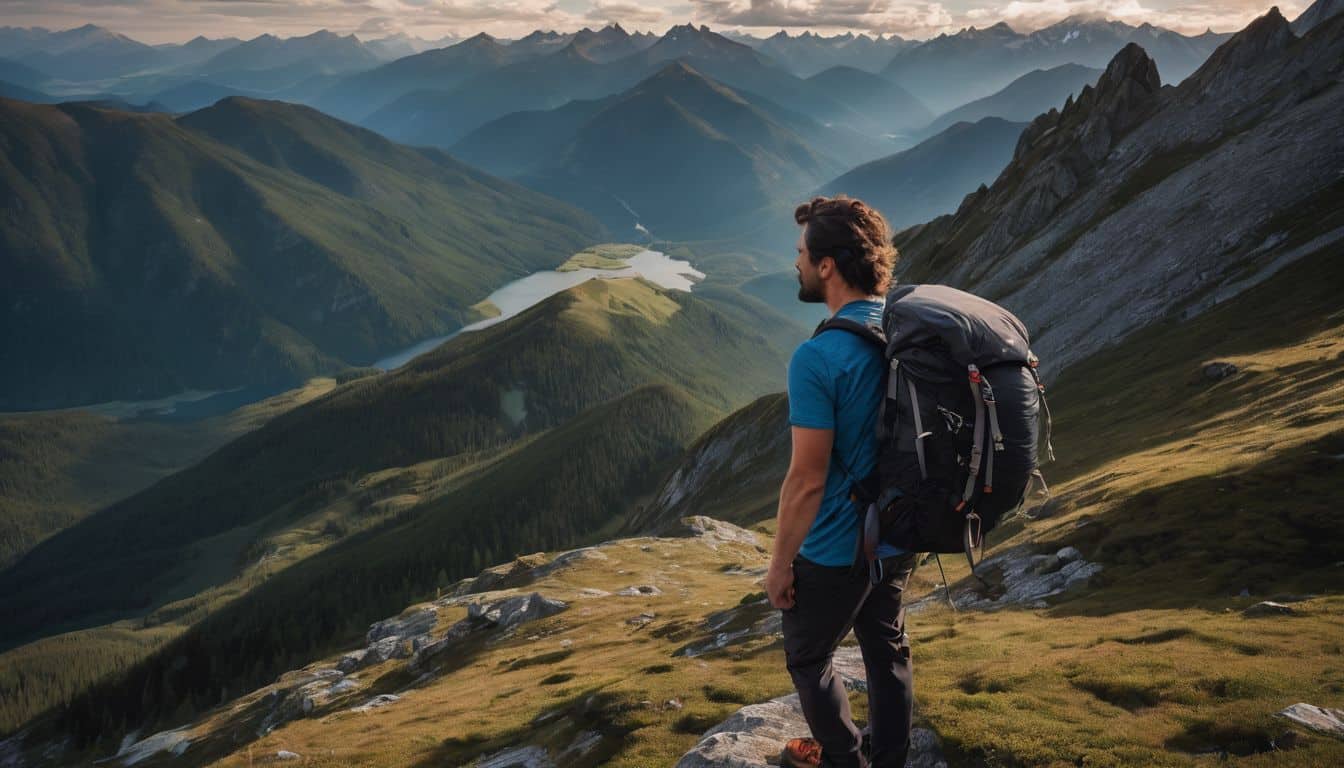
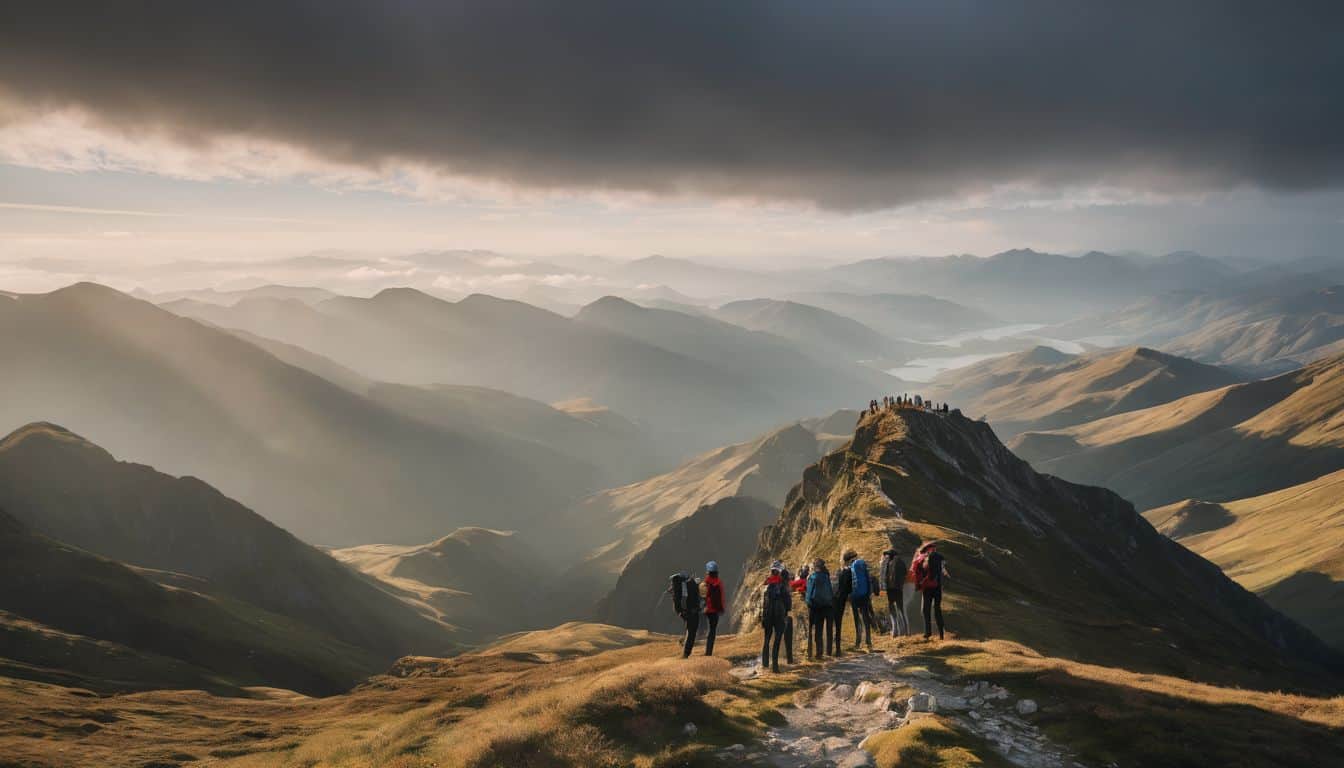
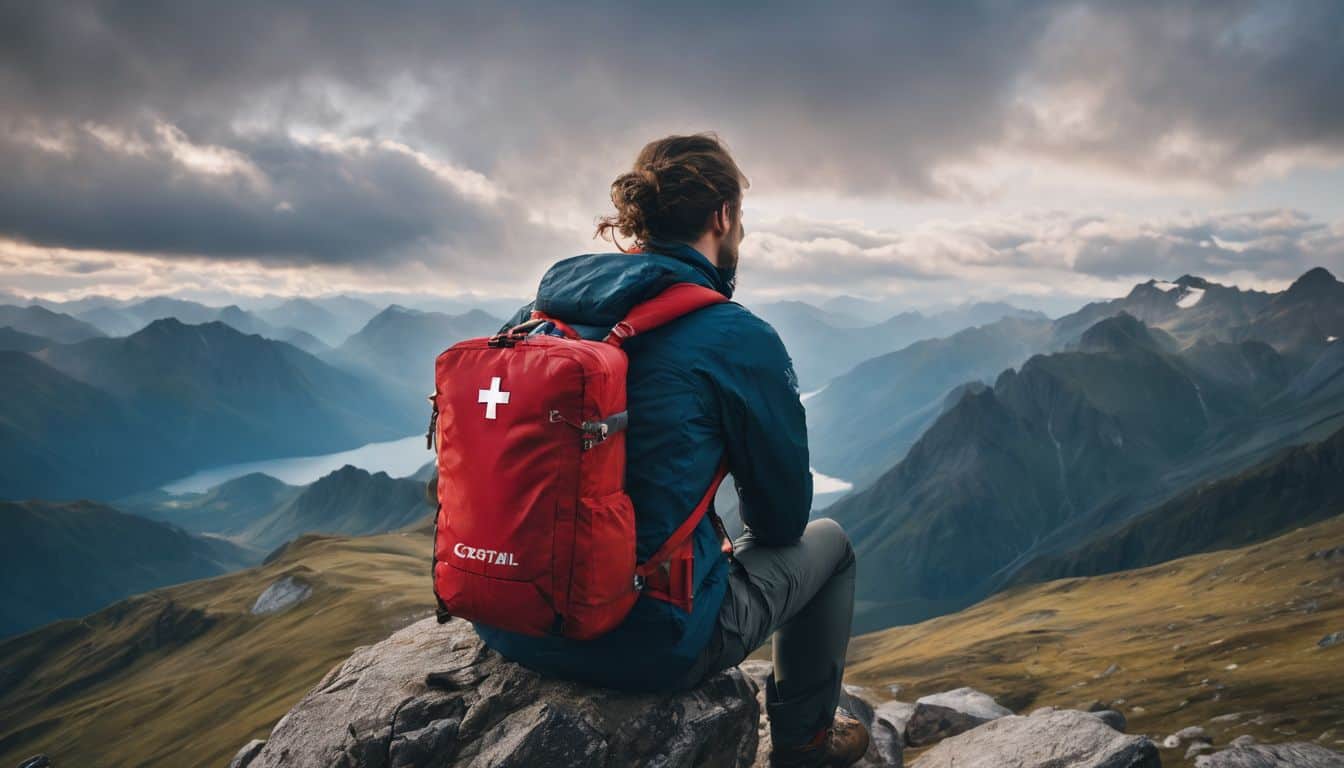
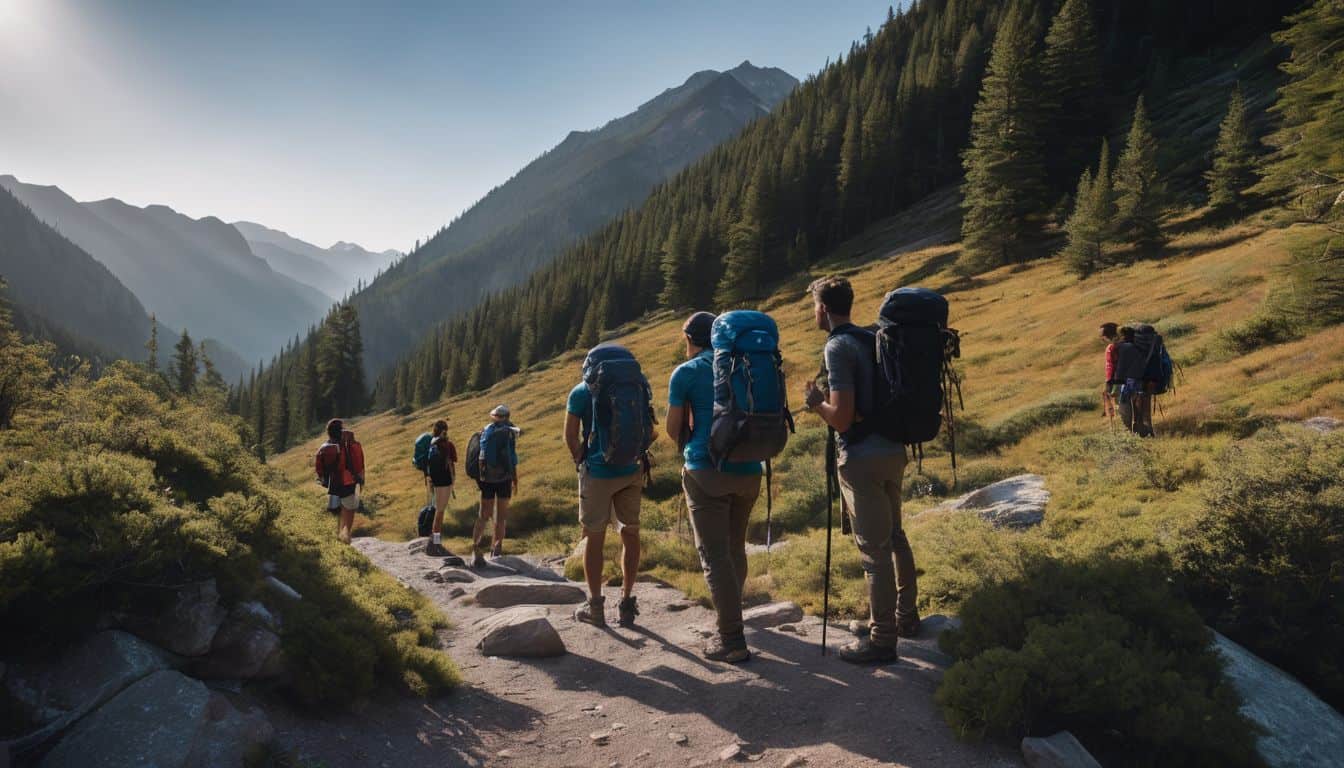
Leave a Reply